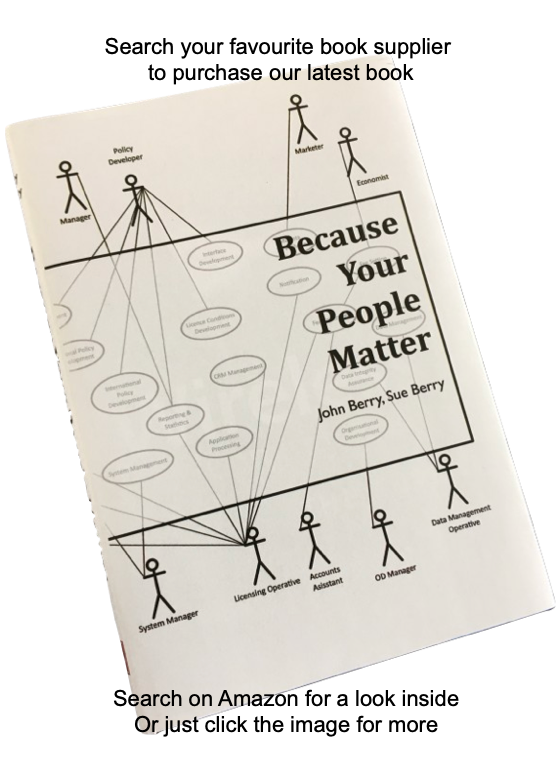Employing peripatetic employees with complex work patterns
Employing peripatetic employees with complex work patterns
Written by John Berry on 23rd January 2019. Revised 26th April 2025.
5 min read
 Sometimes, the scenarios that our clients ask us to work with are straightforward – a revised pay structure, a manpower plan or a restructure of existing activities. But occasionally they present something that takes a little more to understand, is more complex and takes more time to develop solutions for.
Sometimes, the scenarios that our clients ask us to work with are straightforward – a revised pay structure, a manpower plan or a restructure of existing activities. But occasionally they present something that takes a little more to understand, is more complex and takes more time to develop solutions for.
Here’s an example of one such complex project.
Simple extremes
Many employees work at their firm’s headquarters or in one of its offices. That’s simple. They go in to the same place every day and HMRC consider that travel there is commuting to work and would not expect the firm to fund it. If travel from there is needed to clients, the point of departure is the normal place of business – the everyday office. Simples!
Others are peripatetic. They work in different places every day and even at different client locations across the day. For them, the HMRC recognises that their employer must fund all their travel – even their travel to work, where that travel is out to their first client location. For them, even travel to work is work.
Those two examples form two extremes in the business of understanding how staff who travel on behalf of their firm should be recompensed and expensed. But what about the greyscale in the middle?
That greyscale is complicated.
Under growth
Imagine this. The employer is growing a business. That business wins a contract that requires the firm to place a worker at a client location to do work for a few hours every Wednesday. The client location is twenty miles from the headquarters and to the north of the county. In time, the same happens at twenty other client locations under six other contracts with work done by five employees. These locations are between 5 and 30 miles from the headquarters.
As the business grows, the work at those locations for each worker becomes the norm – involving the same employee on the same day and time each week.
And that’s when it gets complicated.
Flexibility key
The firm needs its staff to be flexible – to agree to travel out here, there and everywhere across the county. And it must grow, adding additional work periods and new workers at each location. New clients ask for pricing and to calculate that the firm must develop a cost model that simulates the worker behaviour. Actual pricing is impossible since each worker travels a different distance.
 In a stable state, these workers go to the same places to work each day – and hence from HMRC, that’s a commute. Commutes can’t be claimed as expenses. But at what point does this happen? After six months? A year? And how then does the firm contribute to the employee’s expenses – with a (taxable) pay rise in lieu? Or simply by adding the mileage to the worker’s P11D? In that latter case, the employee would suffer a loss, requiring the allowable claim to be grossed up.
In a stable state, these workers go to the same places to work each day – and hence from HMRC, that’s a commute. Commutes can’t be claimed as expenses. But at what point does this happen? After six months? A year? And how then does the firm contribute to the employee’s expenses – with a (taxable) pay rise in lieu? Or simply by adding the mileage to the worker’s P11D? In that latter case, the employee would suffer a loss, requiring the allowable claim to be grossed up.
At that point – and you might ask, “What point?” – every employee has a different chargeable hourly rate and a different rate of pay for every location. And employees who previously had avoided doing a tax return are now saddled with that and are suitable unimpressed.
Of course, it hasn’t finished there.
New gigs
The firm is growing and wants to exploit its flexibility by moving staff from some of these established ‘gigs’ to use their experience to set up work at new clients in new locations. Some employees no longer drive but use public transport on particular days - it's more efficient, you see. Some locations are nearer the headquarters and some more distant. And at some locations, some employees will become supervisors while at others they’ll remain just a plain worker. Supervisors attract an uplift in hourly rate for the added responsibility.
This change means that any idea of ‘normal place of work’ has been broken. Attendance at new sites is often a pilot, which, if all goes well, might result in a new contract. Attendance might in the future become a norm, but not initially.
And off we go again.
New terms
Employees travel out to do work and clients negotiate and re-negotiate contracts in an exciting, dynamic business. And HMRC sits on the side, applying tax rules built for one of the two extremes outlined initially.
In our example, the rates of pay differ day by day, employee by employee, location by location and by maturity of the client contract. And the travel costs and expenses recoverable change.
One could just let it all float – a bit of a nightmare for the financial controller, but manageable through timesheets and expenses claims. But with each permutation comes differing employee reward and loss and a degraded sense of fairness in the staff body. Employees never quite know what they’ll get paid and how much they’ll be taxed.
The result will likely be a reduced acceptance of flexibility and a growing feeling of relative injustice as some employees win while others get ‘penalised’.
Modelling the solution
Our approach to this problem was to set up a model of the firm – to add new gigs and build scenarios. This modelling gives three valuable tools – a cost model for building future quotations, a scenario model to be used in discussions with HMRC to get the right taxation approach and a model to be used to set and control modifications to employment contracts as the firm grows.
And of course, modelling means that managers will understand the dynamics of the firm and make decisions day by day accordingly.